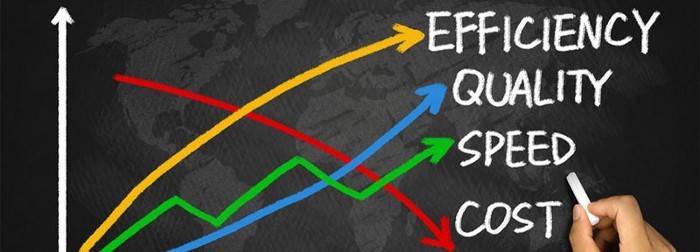All that you needed to be aware of B2C (Business to customer) Deals and Appropriation yet didn’t know whom to ask-Section 1.
Welcome to a three section series on the best way to set up a decent and vigorous disconnected circulation framework. Notice the title said, “Deals and Circulation”, yet the principal line quickly moves the concentration to dispersion.

Indeed, that is illustration #1. Deals is a result. The dissemination exertion is the information. In the event that you get the appropriation exertion right, deals will follow.
A decent sales rep figures out this. He is centered around building a strong circulation framework, from where he can anticipate supported, beneficial deals.
In the following couple of online journals, we will share how a solid circulation framework can be gotten up positioned support your disconnected deals.
The whole Deals and Dissemination hardware chips away at 4 key points of support:
1. Capital
2. Proper Dimensioning (# of channel accomplices, the order of dissemination)
3. Product story
4. Monitoring and Input frameworks
Indeed, we demand its this arrangement. Presently gives up into additional detail and in this blog, lets examine capital.
CAPITAL: Which job does capital play. How might it be effectively contributed. What’s more, how could its proficiency be estimated.
Regularly, a substance called the wholesaler is the main purchaser of merchandise from an organization. This wholesaler is answerable for stock keeping, and afterward further providing products to retailers from where the end shopper buys.
An organization, guarantees a wholesaler a ‘edge” for his administrations. We call this the gross edge for the wholesaler. This is his actual procuring, from where he pays out to every one of his expenses and chooses his benefit.
Presently lets perceive how this functions.
Say an organization, produces products and offers it to the wholesaler for INR 100.
What’s more, the wholesaler offers this to retailer for INR 105. He is consequently making INR 5 on Deals of INR 105. Or on the other hand a 4.8% edge on his offering cost to retailers.
Normally, an organization can additionally relax this by offering credit to the merchant. While there is no guideline on this, its deal to expect that a merchant esteems this credit at around 18% per annum or 1.5% each month. This implies that a wholesaler might have acquired cash to pay the organization at a 18% premium from the market. The organization, by offering credit is saving him 1.5% each month. The equivalent can be added back to the edge.
Be that as it may, most wholesalers likewise stretch out credit to their clients on the lookout. Credit got and credit given normally counteract one another.
Presently lets check out at different expenses of a wholesaler.
• He would utilize a sales rep to take item to the market.
• Add a unit for conveyance.
• Office costs incorporate lease, power, a bookkeeper , stockroom costs.
Note: on the off chance that a wholesaler is dividing the above costs between numerous brands, it is normal practice to designate these expenses according to turnover of the brand.
These expenses are then switched over completely to a for each unit cost.
Eg.: on the off chance that the wholesaler has bought item for INR 100 and sold it for INR105, these expenses are switched over completely to a % of the selling cost of INR105.
Commonly, these costs would be INR 3-3.5.
Thus now the net edge for a merchant would be INR 5-INR 3.5= INR 1.5.
So this merchant makes RS 1.5 on an offer of INR 105. Or on the other hand a 1.42% edge.
Pivots: THIS IS THE Main Measurement IN A Dispersion Framework.
What a wholesaler is relying on, is that the interest for this brand is extremely high and that he will continue to turn his cash.
What does revolution resemble? He purchases item for INR 100, sells for INR 105 and pays the organization INR 100. Saves INR 5 for himself, causes cost of INR 3.5 and makes an edge of INR 1.5.
He would like this exchange to rehash as quick as could really be expected.
Eg: On the off chance that this exchange rehashes once consistently, he makes on his venture of INR 100, INR 1.5-4 times each month. Or on the other hand INR 6 every month on a speculation of INR 100.
This is presently alluded to as 6% net edge in a month Or 72 % (6% X a year) a year. So for INR 100 contributed, a merchant is making INR 72 in a year. 72% is in this manner his return on initial capital investment or Profit from Speculation.
In appropriation, the revolutions and return on initial capital investment are undeniably more significant than the edge made per exchange.
Regularly, organizations attempt to convey 25% return on initial capital investment to their wholesalers. In the event that the volume of deals are high, and the wholesaler is money management well, this return for capital invested permits him to make a generally excellent work.
A wholesaler puts INR 50 Laks into a business. The organization conveys a 25% return for capital invested. The wholesaler in this way makes INR 12.5 Laks on his venture every year.
Delineation 1:
Two merchants have the accompanying plan of action.
While item (ii) has INR 500 for every unit as Net Edge, Item (I) has a lot higher pivots. Furthermore, therefore conveys undeniably more return on initial capital investment to a merchant. On the off chance that the size of this item’s market is enormous, and the development rate is appealing, a merchant will like to put resources into Product(i) over Item (ii).
Another item being introduced to a merchant is subsequently introduced on two fronts.. The Gross edge, and the revolutions anticipated.
A wholesaler makes his assessment of the engaging quality of the item on these two factors and settles on a choice to contribute or not.
General guideline: This is a representation of the way a common wholesaler’s business would seem to be. Use it to assess costs/anticipated returns/speculations.



